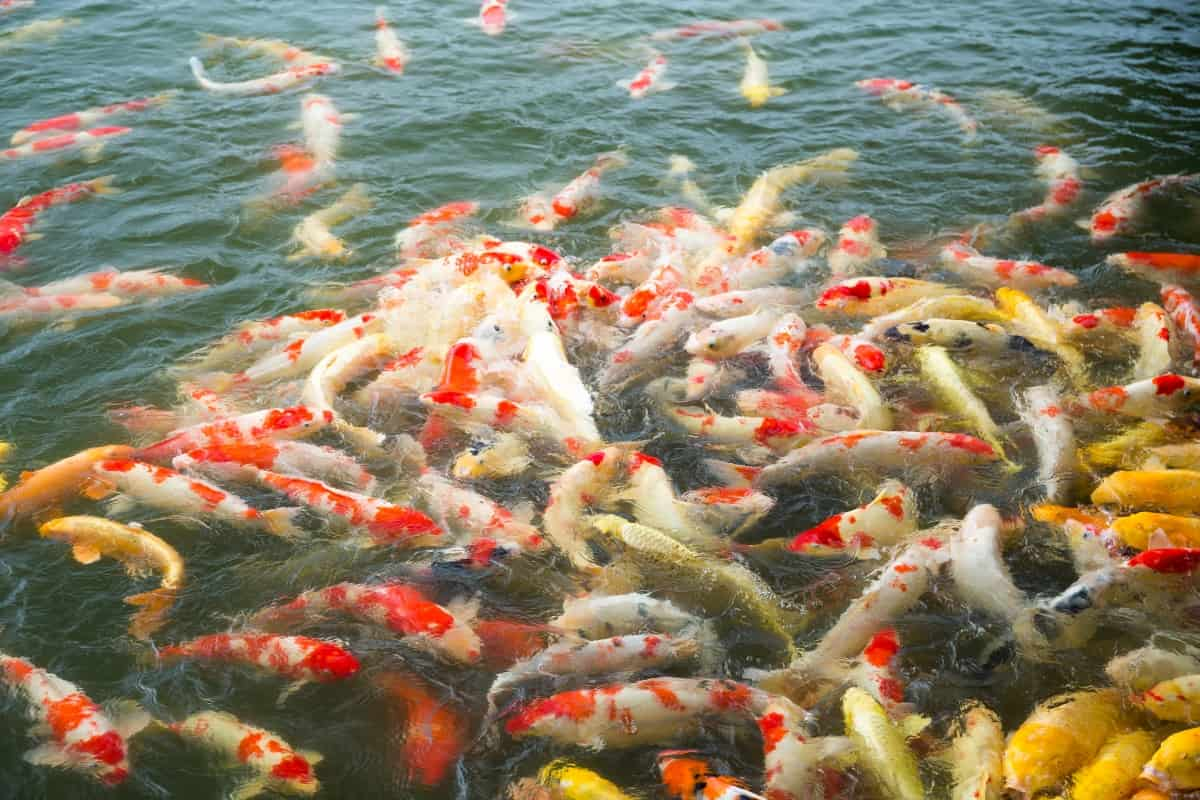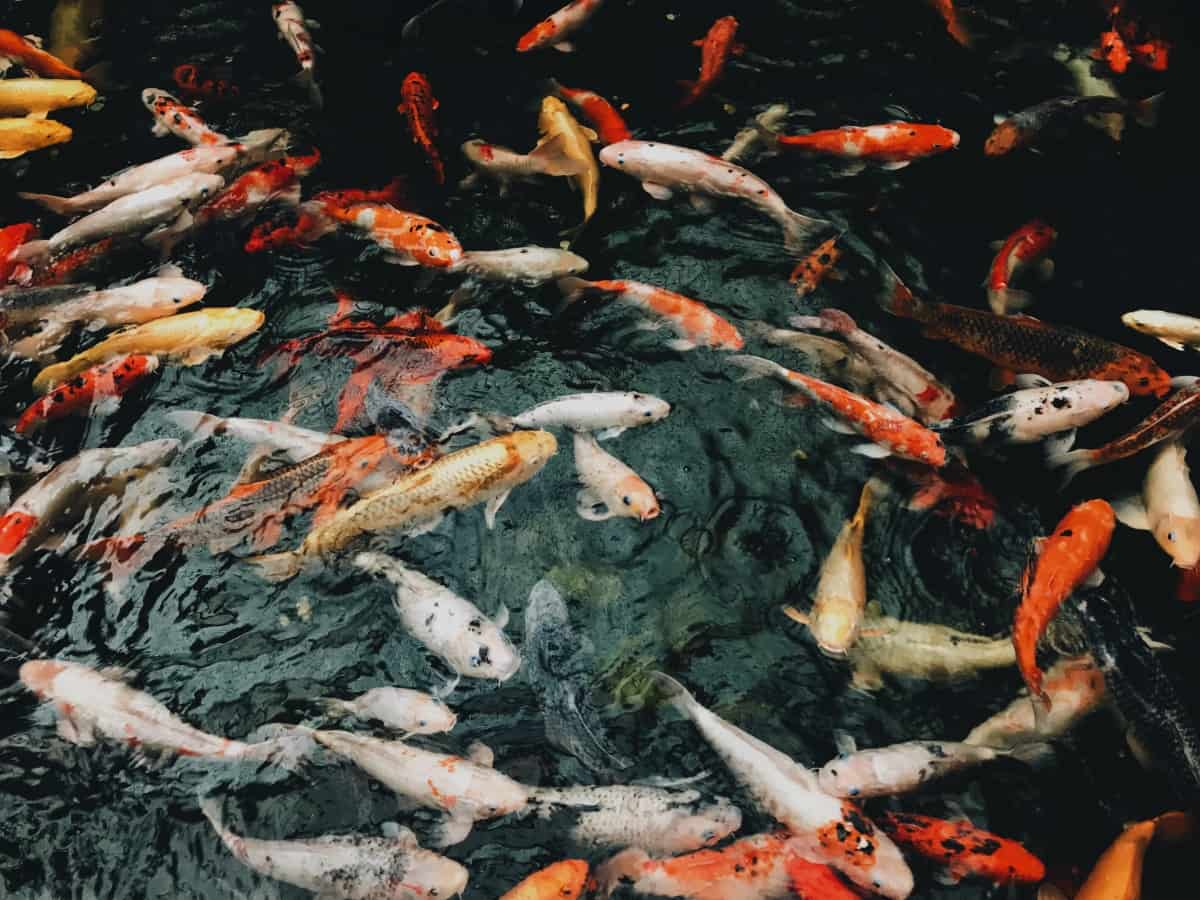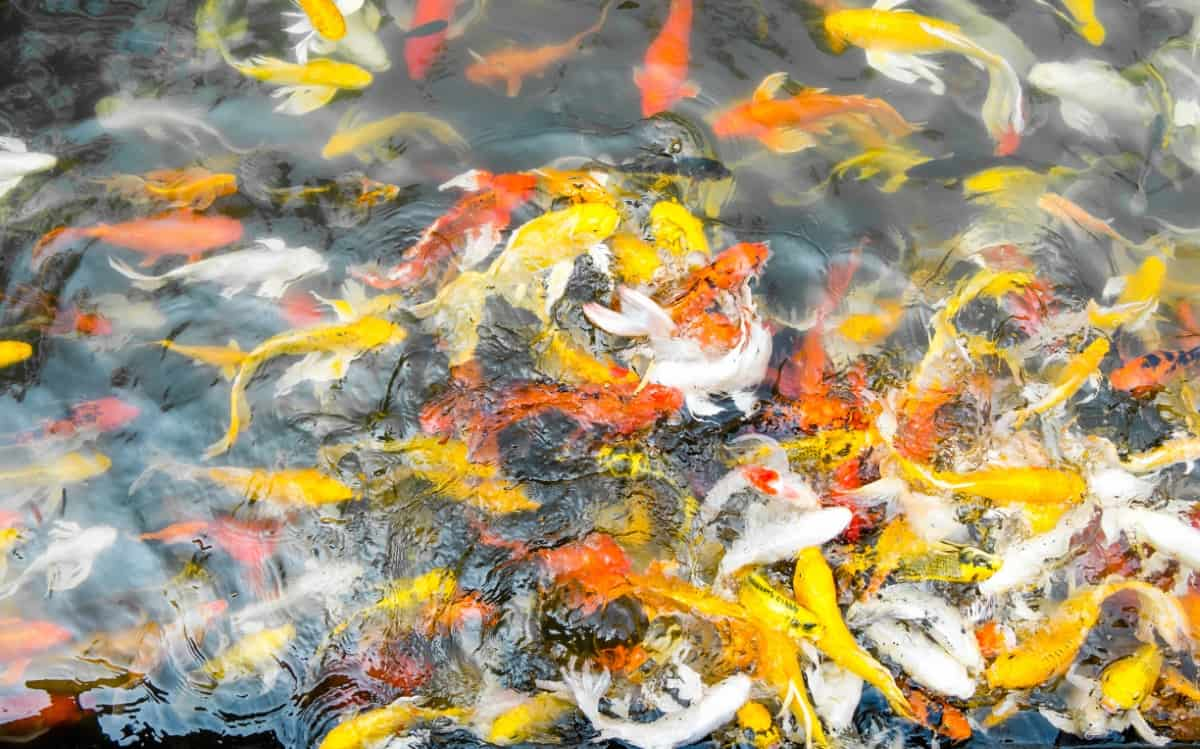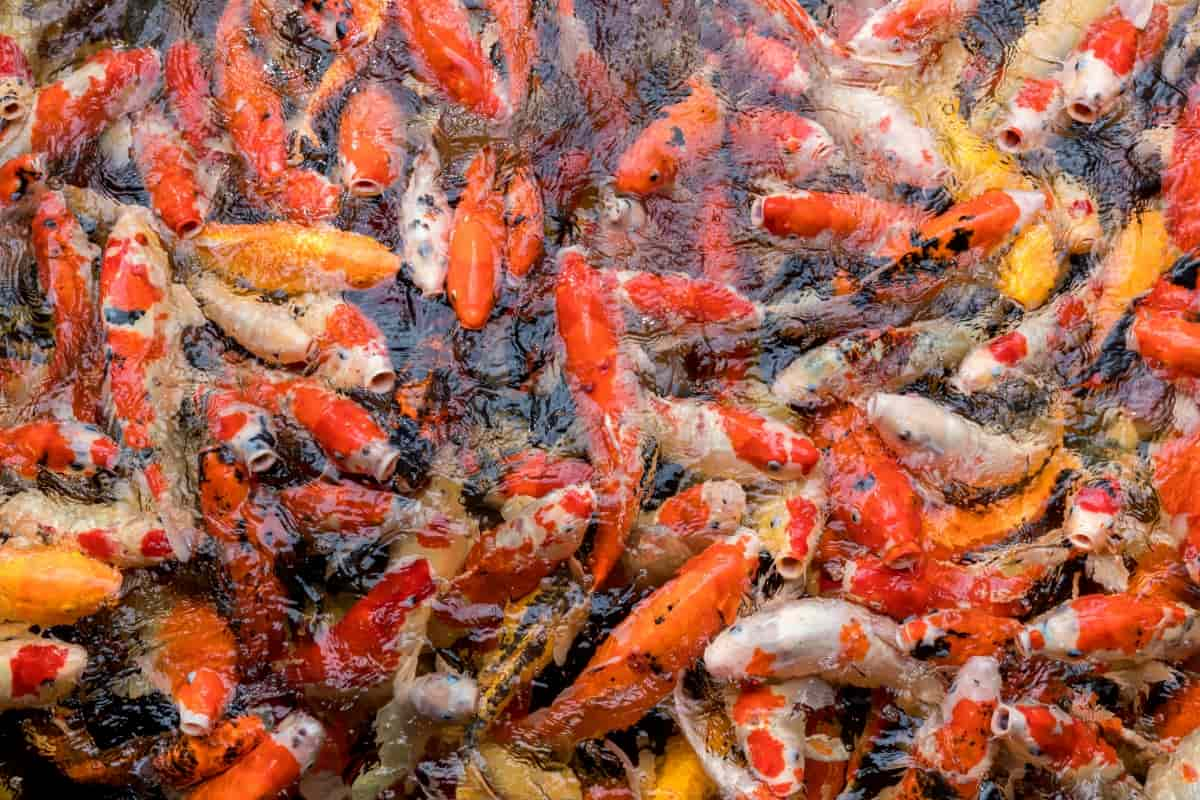When contemplating the creation or expansion of a koi pond, enthusiasts often wonder, “How many koi should be kept together?”, “What is the minimum pond size for koi?”, “How many koi are in a 2000 gallon pond?”, “What is the stocking density for koi?” and “How many koi can I put in a 2000 gallon pond?”. This article aims to answer these frequently asked questions and comprehensively understand the optimal koi stocking density in a 2,000-gallon pond.

How Many Koi in a 2000 Gallon Pond
Determining the Ideal Koi Population for a 2,000-gallon Pond
Koi are social fish that thrive when kept in groups. However, overstocking can lead to health issues and imbalance in the pond’s ecosystem. For a 2,000-gallon pond, the ideal number of koi is influenced by several factors, including the size and age of the fish, the pond’s design, and its filtration capacity. While a common rule of thumb suggests ten gallons of water per inch of koi, this guideline may vary depending on the specific conditions of your pond.
Factors to Consider when Calculating the Number of Koi in A 2,000-Gallon Pond
Several factors are pivotal in determining the optimal number of koi for a 2,000-gallon pond. First, consider the size of the fish. Larger koi require more space than their smaller counterparts. Additionally, the pond’s shape can affect fish mobility and water circulation. Deeper ponds tend to support more koi since they offer a more stable environment with consistent temperatures. Also, consider the koi’s growth potential; they can grow rapidly, and today’s perfect number might become tomorrow’s overstocked scenario.
Optimal Koi Stocking Density for a 2,000 Gallon Pond
The stocking density for koi is a crucial concept for ensuring your fish’s well-being and your pond ecosystem’s health. For a 2,000-gallon pond, an optimal koi stocking density would involve considering the pond’s volume, depth, surface area, and filtration capabilities. Generally, an ideal range to start with would be between 10-20 mature koi, keeping in mind that koi can grow large, often reaching lengths up to 24 inches or more.
Calculating the Maximum Koi Capacity in a 2,000 Gallon Pond
Remember that more isn’t always better when figuring out how many koi can be accommodated in a 2,000-gallon pond. While adding as many fish as the pond can theoretically support might be tempting, this could lead to problems down the road. Using the common guideline of ten gallons per inch of fish, a 2,000-gallon pond can technically support 200 inches of koi. However, to ensure ample growth and movement, it’s advised to stock the pond at 75% of its maximum capacity, roughly 150 inches of koi or 15 full-sized koi.
In case you missed it: How to Start Koi Carp Fish Farming: DIY in 10 Steps Guide for Beginners

Understanding the Relationship Between Pond Size and Koi Population
The relationship between pond size and koi population is linear yet complex. A larger pond doesn’t simply mean more fish; it offers a more stable environment, especially regarding water temperature fluctuations and waste dilution. This stability often results in healthier fish. On the other hand, the minimum pond size for koi should be at least 1,000 gallons to maintain a stable environment. In the context of a 2,000-gallon pond, while it can support a decent number of koi, monitoring the pond conditions and fish health regularly is essential.
Maintaining a Balanced Koi Population in a 2,000-gallon Pond
Maintaining balance is paramount for koi populations in any pond, let alone a 2,000-gallon one. Balance here refers to ensuring harmony between the number of fish, the available resources, and the waste they produce. Overstocking can lead to stress, increased susceptibility to diseases, and strain on the pond’s ecosystem. Regular checks on water quality, koi health, and filtration efficiency are essential to maintain a balanced population.
The Importance of Proper Filtration and Water Quality for Koi in a 2,000-Gallon Pond
Lastly, it’s crucial to underline the importance of filtration and water quality when discussing koi populations in a 2,000-gallon pond. A good filtration system ensures that harmful toxins like ammonia and nitrites are kept at bay, providing a conducive environment for the koi. Water quality, intertwined with filtration, plays a pivotal role in koi health. It affects their growth, coloration, and susceptibility to diseases. Therefore, regular water testing, timely filter maintenance, and periodic water changes are crucial for keeping your koi healthy and happy in a 2,000-gallon pond.
In case you missed it: Natural Ways to Increase Fish Feed Production in Ponds

Tips for Managing Koi Health and Growth in a 2,000-Gallon Pond
Monitoring water quality is paramount; ensure that pH levels remain stable, ammonia and nitrite levels are non-existent, and nitrate levels are kept at a minimum. Employ high-quality filters to eliminate harmful toxins and facilitate the breakdown of organic waste. Nutrition is another crucial aspect; feed koi a balanced diet using premium-quality pellets that cater to their age, size, and activity level.
Overfeeding should be avoided, as it compromises water quality and the fish’s health. Furthermore, make sure to introduce new koi to the pond with caution. Quarantine new arrivals to avoid spreading potential diseases to the established population. Lastly, provide your koi with enough shaded areas, especially during hotter months, to protect them from excessive sun exposure and keep the water temperature stable.
Considerations for Breeding Koi in a Limited Space Pond
First and foremost, ensure that the pond has areas that offer privacy, which are conducive to koi spawning. These can be achieved by strategically placing aquatic plants or rock formations. The water quality must be impeccable during the breeding season, necessitating frequent checks and adjustments. When breeding in a limited space, keeping the number of male koi in check is essential, as too many can lead to aggression and harm to the female koi during the spawning period.
Post-spawning, consider using separate rearing tanks for the fry. This protects them from potential predators, including adult koi, and allows you to control their environment more effectively. Remember, breeding requires heightened attention to detail, especially in smaller ponds, to ensure the health and safety of both the adult koi and their offspring.
Strategies for Ensuring the Long-Term Success of Koi in A 2,000-Gallon Pond
Ensuring the long-term success of koi in a 2,000-gallon pond is a commitment that involves several ongoing strategies. Regular maintenance routines are indispensable, including cleaning the pond, checking and cleaning filters, and ensuring the water quality is optimal. Create a diverse habitat within the pond with a mix of deep and shallow areas, various substrates, and aquatic plants. This makes the pond aesthetically appealing and provides koi with an environment where they can thrive.
In case you missed it: Key Rules to Successful Fish Pond Management: Water Quality to Feeding

Always be vigilant for signs of disease or stress in the koi. At the first sign of any abnormal behavior, separate the affected fish and consult with a specialist. Educate yourself continuously. Koi keeping is a dynamic hobby, and there’s always something new to learn. Attend seminars, join koi enthusiast groups, and read up on the latest research and findings. This ensures you’re always equipped with the best knowledge and practices to keep your koi thriving for years.
Koi Pond Size Calculator: How Many Koi Can Be Kept in Various Pond Sizes
| Pond Size (Gallons) | Number of Koi (Assuming average size of 10-12 inches) |
| 500 – 1,000 | 4 – 6 |
| 1,000 – 1,500 | 6 – 10 |
| 1,500 – 2,000 | 10 – 15 |
| 2,000 – 2,500 | 15 – 20 |
| 2,500 – 3,000 | 20 – 25 |
Conclusion
Ensuring the health and well-being of koi in a 2,000-gallon pond requires a blend of careful management, proper environment creation, and continuous learning. Adopting these practices ensures a thriving, vibrant koi community for years.
- Feed Your Flock for Less: Top 10 Tips to Save on Chicken Feed
- Ultimate Guide to Ossabaw Island Hog: Breeding, Raising, Diet, and Care
- Hatching Answers: The Top 10 Reasons Your Chickens Aren’t Laying Eggs
- Eggs and Economics: Breaking Down the Cost of Raising Backyard Chickens
- Defend Your Greens: Proven Methods to Keep Iguanas Out of Your Garden
- Ultimate Guide to Cinnamon Queen Chicken: A Comprehensive Guide for Beginners
- Ultimate Guide to California Tan Chicken: Breeding, Raising, Diet, Egg-Production and Care
- Ultimate Guide to Marsh Daisy Chicken: Breeding, Raising, Diet, and Care
- 10 Types of Chicken Farming Businesses You Can Start for Profits